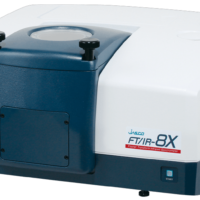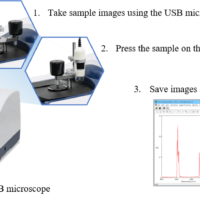Introduction
Compared to the standard DLATGS (Deuterated L-Alanine Triglycine Sulphate) detector mounted on an FTIR for macro measurements, the MCT (Mercury Cadmium Telluride) detector used with an infrared microscope has a much greater sensitivity, which is suited to the measurement of micrometer sized samples common for microscopic measurements. However, the MCT detector has some disadvantages such as the requirement for liquid nitrogen cooling for measurements, a reduced absorbance linearity and a reduced wavenumber range for measurements. JASCO has developed a dedicated DLATGS detector for infrared microscopy, especially focusing on an increased sensitivity. As a result of many years of work, the new microscope DLATGS detector has been created.
In this article, microscopic measurements and mapping measurements with the use of the DLATGS detector are outlined.
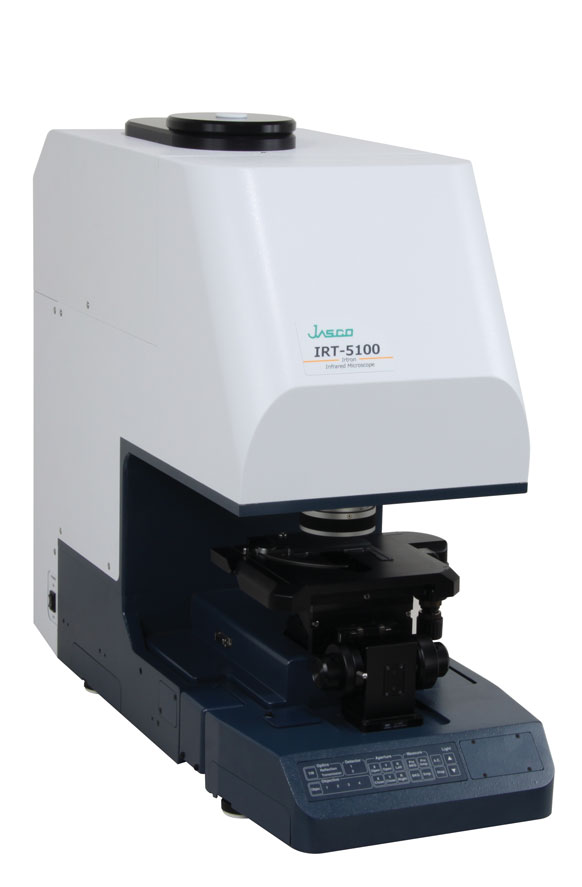
IRT-5100 FTIR microscope
Experimental
Comparison of DLATGS detector and MCT detector (Measurement of polystyrene)
<Measurement parameters>
Aperture size: 50 x 50 μm
Accumulation: DLATGS: 100 times, MCT: 50 times
Measurement method: transmission
Figure 1 shows the infrared spectra of a polystyrene film using an IRT-5200 using the DLATGS detector and the standard mid-band MCT detector. As demonstrated in Figure 1, the DLATGS detector requires twice the accumulations as compared to the MCT, but the DLATGS does allow the measurement of a 50 x 50 μm region.
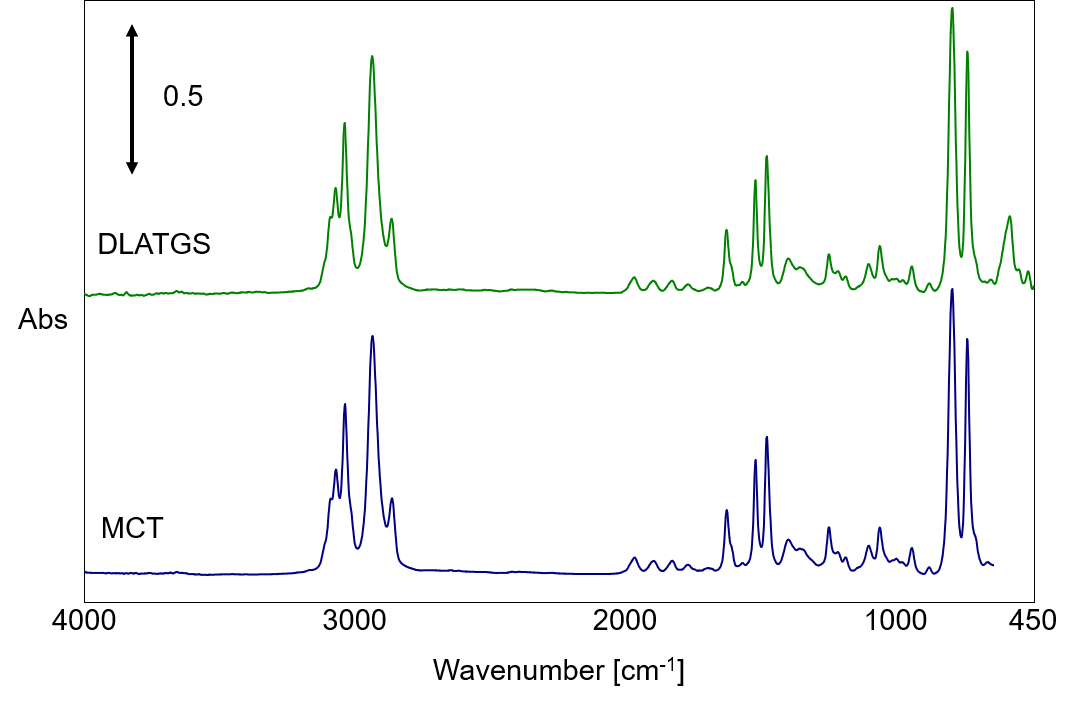
Figure 1. Spectrum of a polystyrene film using the DLATGS and an MCT detector
Comparison of DLATGS detector and MCT detector (Measurement of Teflon sheet)
<Measurement parameter>
Aperture size: DLATGS: 50 x 50 μm, MCT: 10 x 10 μm
Accumulation: DLATGS: 100 times, MCT: 50 times
Measurement method: transmission
Figure 2 illustrates the infrared spectra of a Teflon sheet using the DLATGS detector and an MCT detector to compare the sensitivity in the low wavenumber region. As shown in Figure 2, the measurement using the DLATGS detector can detect the absorption peaks of Teflon in the wavenumber range from 650 to 450 cm-1 where narrow and mid-band MCT detectors cannot detect the peaks.
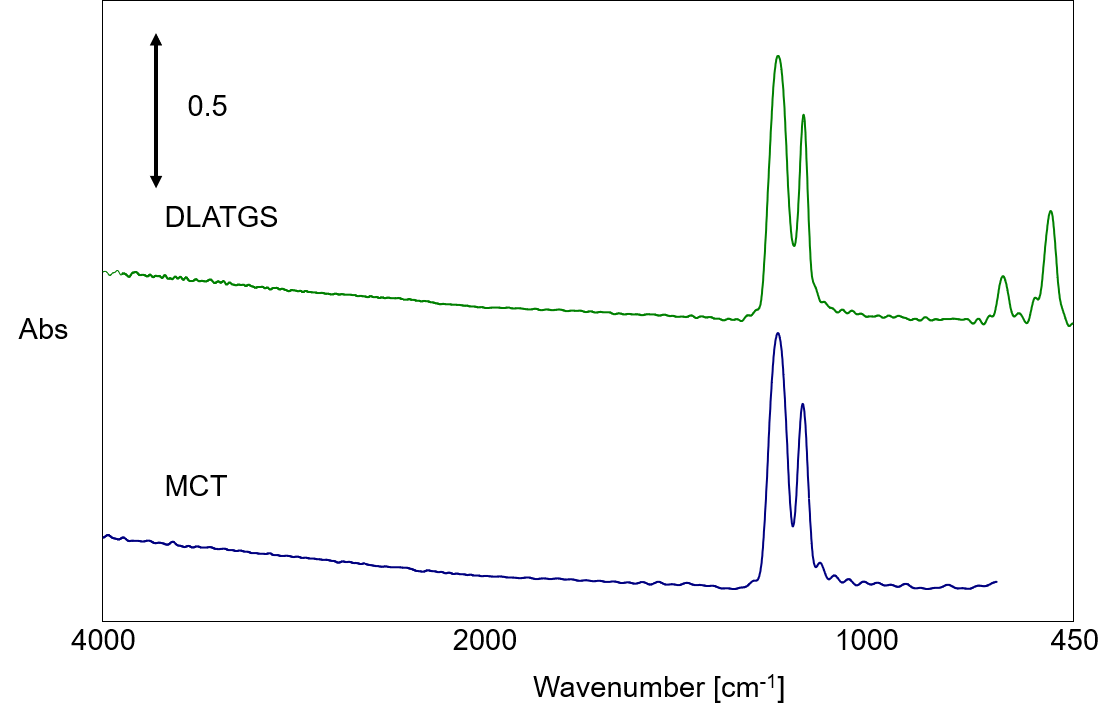
Figure 2. Spectrum of a Teflon sheet with using the DLATGS and an MCT detector
Microscopic ATR mapping using the DLATGS and IQ mapping
The results above demonstrate that the DLATGS detector is effective for infrared spectra measurements in a 50 x 50 μm region. Now, a mapping measurement of a microscopic region by a micro-ATR cassegrain using the DLATGS is outlined. The IQ mapping function is installed in the IRT-5200 as a standard feature, which allows a mapping measurement with the ATR prism in contact with a sample by moving the mirrors within the microscope. In this demonstration, the microscopic ATR mapping of polyethylene particles on a Teflon sheet are accomplished by using the DLATGS detector.
<Measurement parameters>
Aperture size: 20 x 20 μm
Measurement points: 14 x 14
Measurement area: 65 x 65 μm
Step: 5 x 5 μm
Measurement method: micro-ATR cassegrain
Accumulations:single point measurement: 256 times, mapping measurement: 50 times
Detector: DLATGS
Figure 3 (A) is the visible image while Figure 3 (B) contains the spectra of 2 single point measurements, which provide recognizable spectra even in a 20 x 20 μm measurement region.
Figure 3 (C) displays the infrared image calculated by a Multi-Component Regression analysis based on the spectra within the mapping measurement. The polyethylene particles are shown in warmer colors, consistent with the particle shown in Figure 3 (A).
These results indicate that the DLATGS detector can be applied to an infrared ATR mapping experiment using a 20 x 20 μm aperture.
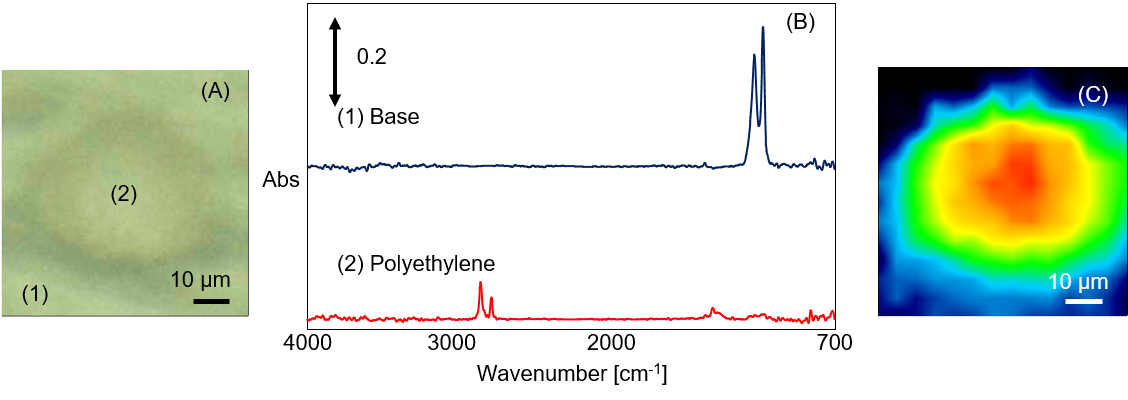
Figure 3. IQ mapping measurement with use of DLATGS
Conclusion
Single point measurements in the micro region and micro-ATR measurements in a mapping mode can be obtained using a DLATGS detector designed specifically for the IRT-5000/7000 series of infrared microscope accessories. JASCO now offers a high sensitivity MCT detector mounted as standard and the DLATGS detector for wide wavenumber range at ambient temperatures to meet various measurement purposes.

